Color Easter eggs with a natural dye

* originally posted on the old ewcouture.com blog, on March 18, 2013
A natural egg dye for fun, artsy and creative Easter eggs this year
I grew up in Romania, in Eastern Europe (somewhere in Transylvania :).
Coloring eggs with dry red and yellow onion peels is one of the things I remember vividly about our every Easter preparation. The fun part for us kids was always the hunt for herbs and leaves. Mom did most of the work through the process, until my 2 younger brothers and myself grew older and could help more.
This looks like a really cool technique now, but the funny thing is that growing up we wished plenty of times for regular pink and blue dyed eggs, adorned with stickers. And we had those too as commercial dyes were available, but we always had the onion dyed Easter eggs with fun, organic leaf patterns!
Last year around Easter time, I posted the screenshot below - of our naturally dyed Easter eggs - on the EW Couture Facebook page. A number of people asked me in the comments and through messages to blog or pin the image for this year's Easter. So, here it is!
Hope you have fun with these! :)
WHAT YOU NEED:
- eggs
- a small grocery bag of dry onion skins from yellow and red onions - the darker the better! (I definitely preffer the red) - about 6 packed cups
- freshly picked herbs and leaves for decoration
- nylon stockings (to wrapp the eggs in - individually)
- string
- scissors
- a few tablespoons of white vinegar (and/or salt)
- stainless soup pot or sauce pan
- slotted spoon
- strainer
- olive oil (or other edible oil; or unsalted butter) - to polish the eggs at the end
BEFORE YOU GET STARTED:
• Carefully wash the eggs and remove anything that might be clinging to the surface of the eggs.
• These instructions assume you start with raw eggs. The eggs are boiled after you decorate them.
• Each egg needs to be wrapped individually, so the leaf/grass blades/herbs/flower petals stay tight to the egg shell. That way the leaf will be able to keep the dye color from penetrating the eggshell in the covered area, and you will have the pretty shape, at the end.
• The eggs taste normal, no onion flavor!
• You can use any kind of leaves - my daughter went outside in the back yard and picked some from the lawn. ...Clover leaves, small dandelion leaves, parsley - they'll work perfect!
RED ONION DRY SKIN DYED EASTER EGGS
1. Collect a small bag of red (and yellow) dry onion skins. Most often the local small grocery store will save the skins if you ask.
2. In a stainless pan, place the onion skins and the white vinegar in 4-6 cups of water - depending on how many eggs you will be dyeing - and bring to a boil. Lower the heat and simmer, covered, for about 20 minutes. (If decorating and wrapping the eggs is taking longer, you can always turn off the heat and let it cool off at room temperature.)
3. Meantime decorate and wrap the eggs. When applying the leaves, apply them wet - it makes it easier to get them to stick to the egg and they stay in place when wrapping them in the thin nylon stocking. Wrap each egg gently and tightly in the stocking, and tie the stocking around it. Cut the excess stocking and gently place the wrapped egg on a plate
4. Gently place the eggs in the pot with the onion skins, with the slotted spoon. Bring to a boil over medium heat.
5. When boiling, reduce the heat to low, cover, and simmer for about 20 minutes. Remove from the heat.
6. The longer the eggs sit in the dyeing liquid, the deeper the color.
If they are not red enough, allow them to sit in the warm liquid for at least 10 more minutes or until the desired color is achieved. You may refrigerate them in the liquid overnight for a nice deep color.
(I don't remember mom ever keeping them overnight. She always seemed to get the color just right. The few tablespoons of vinegar and/or the salt in the boiling water, will always help darken the color of the egg shells.)
7. Transfer each egg to a plate and cut the stocking with a pair of scissors.
Peel back and discard the herbs. Pat the eggs dry with a paper towel, or let them air dry on the plate or in a strainer.
Mom never seems to wait long for the eggs to cool off, as the plants tend to dry quick. It makes it hard to peel them off. However, if that happens, you can place the eggs in water again, so the plants get moist and easy to handle.
8. To add luster and close the pores of the eggshells, the eggs need to be smeared with a little oil, wax, bacon or butter (unsalted! - don't ask me how I know ;)
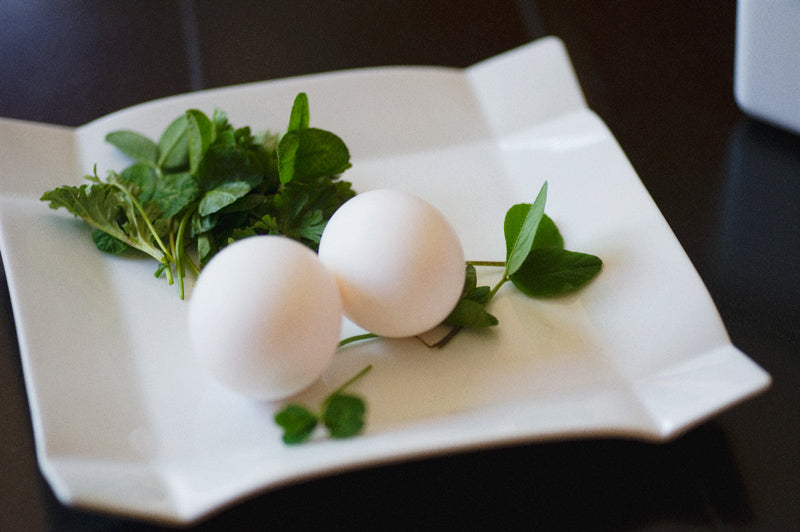
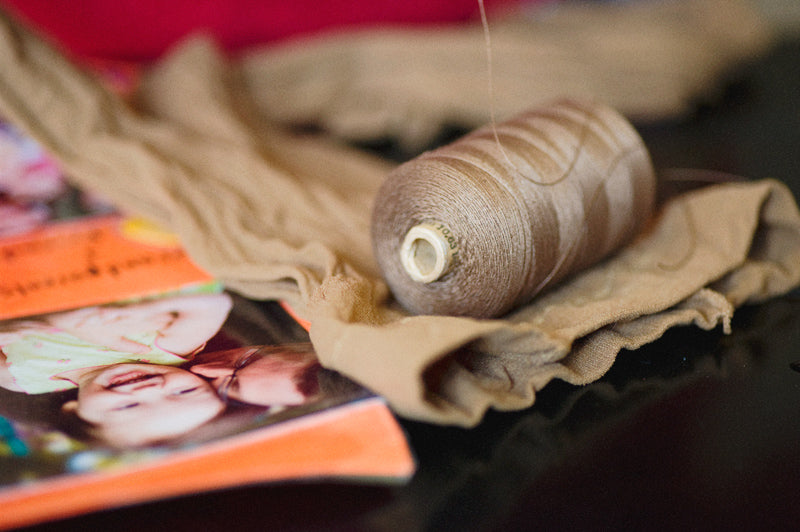
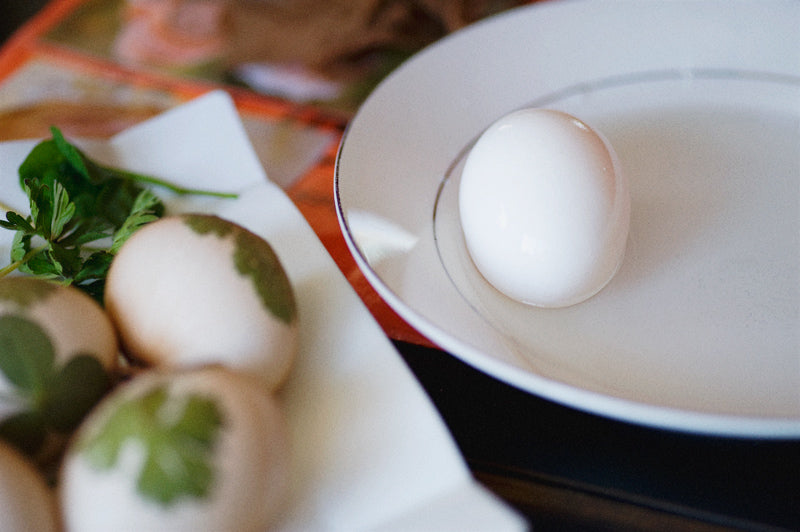
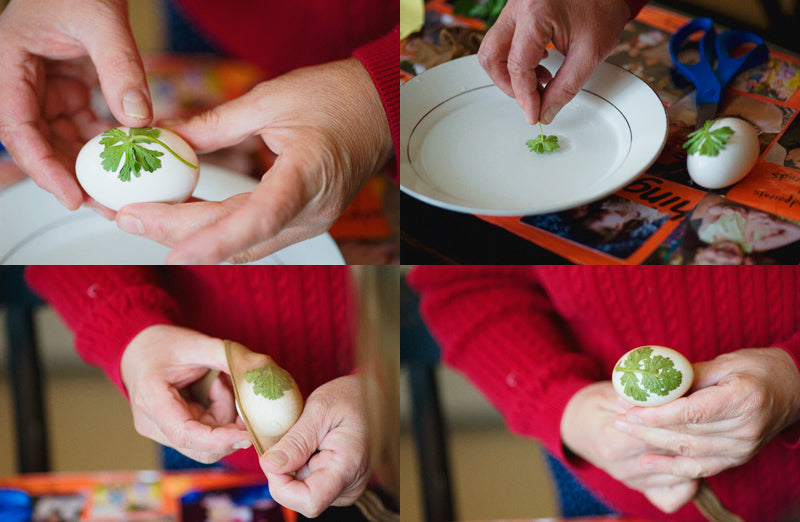

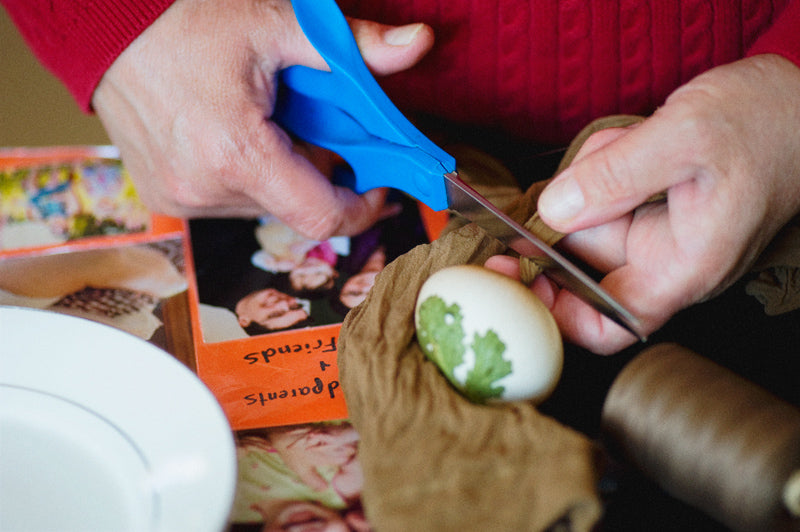
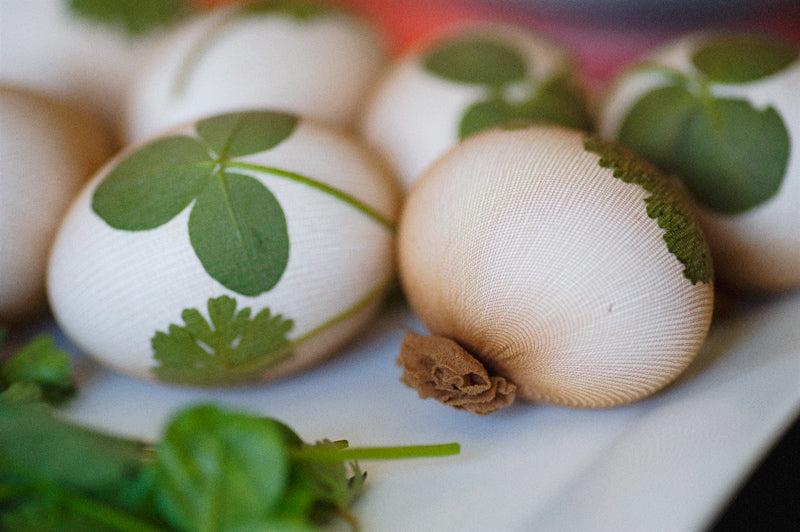

Miss Audrey, helping grandma :)
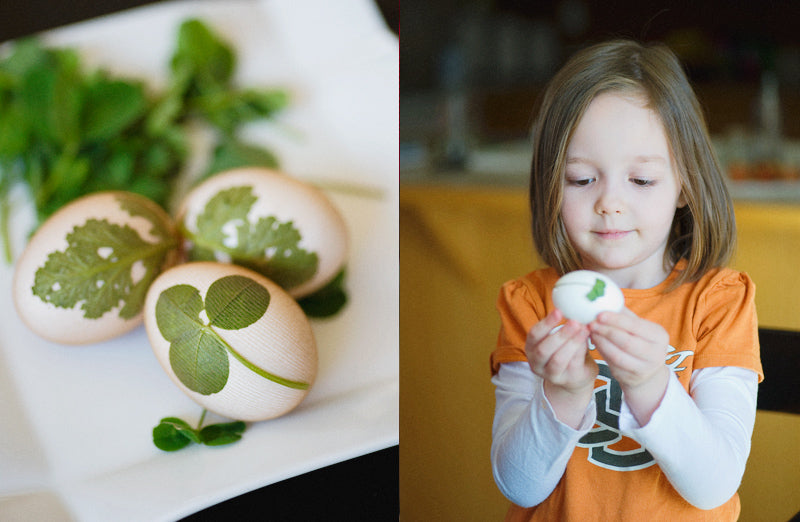


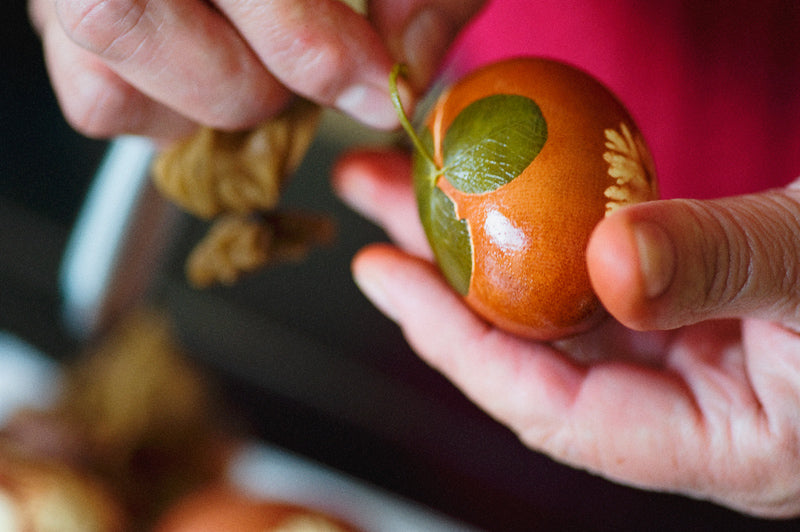

With my oldest turning 4 last year, I wanted to carry the tradition in our little family.
So we invited grandma over and we all had fun together! I documented the experience for our family album, and from all the images I picked a hand full that show the process for you. It's all natural and really awesome, as you can get as creative as you like! :)



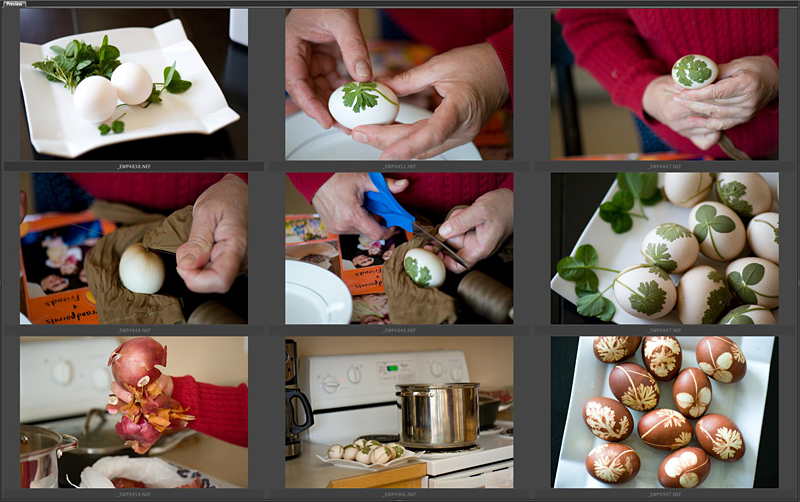
Leave a comment